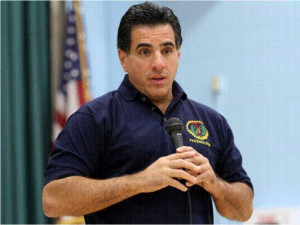View the entire newsletter for more articles: 2015 - NJAC County Biz - October
by Cheryl Makin, Staff Writer for mycentraljersey.com
 Volunteer firefighters and rescue squad members serve a vital purpose in their communities. They save lives, which is paramount. But they also do it at modest cost, far below the investment that would be needed for paid units.
Volunteer firefighters and rescue squad members serve a vital purpose in their communities. They save lives, which is paramount. But they also do it at modest cost, far below the investment that would be needed for paid units.
There are nearly 600 volunteer fire departments across the state, compared to just 50 manned entirely by career professionals. Statewide, volunteers outnumber the career firefighters by more than 4-to-1.
New Jersey, in other words, is highly dependent on its public safety volunteers. But their numbers are dwindling, for reasons easy to understand but hard to solve. Economic challenges and a growth in two-income families put the squeeze on available volunteer hours even for those willing to serve. State training requirements have grown tougher — a well-intentioned effort that has also made it harder to recruit and retain volunteers. A decline in overall civic responsibility may have chipped away at the enthusiasm for volunteering as well. The primary impact to date has been to force many communities toward incorporating paid units to help compensate for coverage gaps. That comes with added costs even while maintaining volunteer units.
If the trend continues and worsens, however, the consequences will be far greater. Towns may have to consider creating fully paid units, a major expense that would inevitably cause other services to be sacrificed. Statewide, the costs of a large-scale shift to paid units would be astronomical.
Middlesex County Freeholder H. James Polos wants to stop that, and has launched a county-wide effort to shine a spotlight on the problem and to bring more volunteers into the fold. But he’s not alone. Assemblyman John Wisniewski and Assemblywoman Nancy Pinkin, both from Middlesex County, have co-sponsored a resolution calling for a special state task force to develop plans to boost emergency-services volunteerism. We urge lawmakers to approve that study and not to ignore or downplay the scope of this problem.
Polos’ has dubbed the Year of the Volunteer in 2015, an initiative he plans to extend into next year. On September 27, Middlesex County held an appreciation day for all of its volunteer firefighters and EMS members and their families at the county fire academy in Sayreville between 1 p.m. and 4 p.m., an event also designed to encourage the public to visit and sign up for duty in their towns. Polos is also working on a “Volunteer Blitz” weekend recruitment effort, reaching out to the public in a variety of ways.
We hope to contribute to the cause with an extended series of stories over the next year that will highlight volunteer heroes throughout the region. There are great stories to be told out there, of long service and bold rescues, of family legacies of volunteerism, of life lessons learned through civic dedication and helping fellow citizens. Perhaps some of these tales will encourage others to get involved, or at least deepen their appreciation for the services volunteers provide.
It’s a hard road ahead, in Middlesex County and beyond. Polos, a long-time volunteer himself, talks with enthusiasm about the potential for success, but he’s also bucking broad and complex societal influences. Throwing more money at the problem, through stipends or LOSAP (Length of Service Award Program) funds or tuition credits can help to a degree as incentive, but most communities don’t have the resources to start pouring significantly more funding into what are supposed to be volunteer units.
Some towns have found that the simplest of amenities — video games in a firehouse, for instance — can help attract and keep young people. Maybe, in some cases, it takes little more than an occasional reminder to volunteers of how valued they really are that can make a world of difference.
Individual experiences from community to community can vary widely. Some EMS and fire units still have to turn people away because their numbers are so large. That, however, is by far the exception; other towns find themselves in a perpetual struggle to keep enough volunteers in the rotation. What’s the difference? Luck of the draw? Greater community spirit in one town over another? Leadership? Incentive plans? Does the diversity of a community matter, pro or con?
A state task force could help answer some of those questions, and map out a path forward. Polos’ ideas shouldn’t stop at Middlesex County’s borders. The public needs to better understand the stakes, quickly.
For more information on this article, please reach out to Cheryl Makin at cmakin@gannettnj.com or Michele Doughty, Middlesex County Office of Communications, at (732) 745-7306 or michele.doughty@co.middlesex.nj.us
